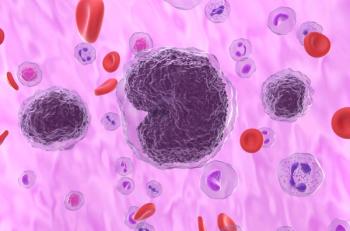
Award-Winning Poster Presentations From AMCP 2024
At the Academy of Managed Care Pharmacy (AMCP) 2024 annual meeting, multiple poster presentations concerned with health equity, data collection, glucagon-like peptide-1 agonists, and more were acknowledged for their originality, relevance, clarity, bias, and quality.
Poster awards at
Platinum Medal
Jessica Duchen, MPH, Magnolia Market Access, et al’s presentation, “Learnings from linking electronic medical record patient cohorts with consumer SDOH data,” focused on social determinants of health (SDOH), which influence an estimated 80% of patient outcomes. In this research, they set out to connect SDOH features at the household and patient levels, procure disease cohorts from electronic medical records (EMRs) and consumer data, and identify SDOH characteristics that are typically unavailable for real-world investigation.1
Between January 2016 and December 2021, the esearchers utilized EMR data collected from community health care providers. Adult patients were identified who were living with HIV, type 2 diabetes (T2D), chronic kidney disease (CKD), metastatic prostate cancer (mPC), or heart failure (HF). These diagnoses of interest were analyzed for overlap with at least 1 SDOH measure, which included age, race, sex, household economic status, marital status, household size, and presence of children.
A total of 2,573,469 patients were found with a linkable SDOH. The authors noted that 19.8% had mPC and 34.3% had HIV. The lowest amount of racial diversity was seen in the mPC and HF cohorts, and the greatest racial diversity existed among patients with HIV or CKD. Furthermore, those in the mPC and HF cohorts had higher changes of living alone and being older than 65 years, and patients with HIV had the greatest chances of being single and living in a childless household.
The authors noted that the medium annual household income in the US is $75,000. Most of their surveyed patients registered below this figure. There were patients who lived in households above this median; however, many of them (47% of those with HIV, 36% with T2D, 33% with HF, 32% with CKD, and 28% with mPC) had an economic stability indicator (ESI) value above 10, which signified a low economic stability relative to their income.
“SDOH measures provide insight into disease-specific patient cohorts beyond demographic data available in the EMR alone. Composite measures and interactions can be derived to provide deeper understanding of care patterns and health outcomes. Including patient- and household-level rather than geographic-level SDOH measures may remove additional variability and bias when measuring the impact on health outcomes and costs,” the authors concluded.
Roy Thomas, PharmD, Dexcom, Inc, et al presented, “Improvements in glycemic control in people with diabetes in an employer health initiative offering continuous glucose monitors (CGMs) as a pharmacy benefit,” which followed a policy initiative that took place in Metro Nashville Public Schools in May 2022. This new policy removed the need for prior authorization and covered CGMs, leading to double their use. Thomas et al conducted this investigation to evaluate how expanded access to CGMs in patients with diabetes affected clinical outcomes.2
Their analysis included patients with type 1 diabetes (T1D) and T2D who exhibited hemoglobin A1C alongside average glucose levels before starting use of a CGM. The investigators were primarily concerned with changes occurring in these measures between CGM initiation and follow-up.
Overall, 184 eligible patients were identified, 43 (23%) of whom had T1D and 141 (77%) with T2D. Among patients with T1D, the researchers saw an improvement in A1C, but this change was not statistically significant (7.8% to 7.5%; P = .11). A significant improvement in A1C, however, was seen among the patients with T2D at follow-up, with a drop from 8.3% to 7.4% (P = .0001). Also, significant improvements in average glucose level were seen across all patients: from 175.0 to 150.9 mg/dL (P < .001). The researchers assessed the proportion of patients able to meet the treatment targets for the American Diabetes Association (ADA; A1C < 7%) and Healthcare Effectiveness Data and Information Set (HEDIS; A1C < 8%). Patients achieving the ADA target increased from 27% (n = 50) at baseline to 45% (n = 83) by follow-up, and HEDIS target achievements increased from 52% (n = 95) to 73% ( n = 134).
These results demonstrate the clinical benefits associated with expanding access to CGMs through the pharmacy benefit and eliminating the need for prior authorization, as these effects were linked to valuable improvements in both A1C and average glucose in patients with T1D and T2D.
Vikash K. Verma, MBA, Optum, et al’s presentation titled, “Impact of Zolgensma in health care utilization in patients with spinal muscular atrophy in the United States: a retrospective claims and electronic health records analysis,” demonstrated the clinical potential of the novel gene therapy Zolgensma (onasemnogene abeparvovec) in the treatment and management of spinal muscular atrophy (SMA). Zolgensma was the first FDA-approved treatment for SMA in patients younger than 2 years, marking a significant milestone in the SMA treatment landscape because, as the authors note, SMA type 1 (which is diagnosed at a young age) has a fatality rate of 95% and leads to many hospitalizations.3 Gene therapy has garnered repeated attention at AMCP, and this trend continued at the 2024 meeting.
Optum deidentified data were retrospectively gathered from Market Clarity from June 2020 through June 2022. Patients included in the analysis had a minimum of 2 claims filed within 30 days related to SMA, and had received Zolgensma. The index data were defined as the time of Zolgensma initiation, and a postindex period of 12 months was used for tracking changes in patients’ health care utilization.
In total, 716 patients with SMA were eligible for the study, 615 of whom had initiated treatment with Zolgensma. The authors noted that significant reduction in the utilization of health care occurred in these patients, with the mean length of hospitalization days decreasing from 9.67 to 5.58 days. Although this measure suggests the clinical efficacy of Zolgensma, the authors concluded by emphasizing the need for more research and indicating their plans to continue similar evaluations moving forward that include analyses of emergency department visits, frequency of inpatient admission, and patient admissions to the intensive care unit.
Gold Medal
Scott Leslie, PhD, Director of Health Outcomes at Prime Therapeutics/Magellan Rx, et al showcased data in their analysis titled, “Real-world first-year cost-effectiveness assessment of glucagon-like peptide-1 agonists to treat nondiabetes obesity,” to investigate changes that took in the total cost of care (TCC) for patients with obesity—without diabetes—in the first year following their initiation (index date) of a glucagon-like peptide-1 (GLP-1) agonist. To achieve this, pharmacy and medical claims data were reviewed by Prime Therapeutics to identify members who began treatment with a GLP-1 throughout all of 2021.4 In the analysis, the year preceding (pre-period) and following (post-period) GLP-1 initiation were also considered.
This investigation included 3887 patients in the GLP-1 therapy group, who were matched and compared with 11,392 control patients. In the GLP-1 group, the average TCC grew by 56%, from $12,776 to $19,931. Patients in the control group saw a 0.2% increase, from $11,369 to $11,391. The average medical cost for GLP-1 recipients increased by 10% ($9950 to $10,960) compared with a 5% decrease ($9294 to $8818) experienced by the control group. Medical spending ($1487) and TCC ($7132) for the GLP-1 group was significantly higher in per-member costs (P < .01).
“These findings can aid in development of evidence-based GLP-1 weight loss management programs, pharmaceutical manufacturer value-based contracts, and health insurance benefit design,” the authors concluded.
Shelagh M. Szabo, MSc, Broadstreet Health Economics & Outcomes Research, et al continued with financial analysis in their presentation, “Evaluating the cost of care and disease progression among patients with nonalcoholic steatohepatitis (NASH): a US cohort study.”
The costs associated with NASH are significantly higher with more severe forms of disease, the authors noted. However, how these financial outcomes vary between forms of disease progression is not fully understood. Therefore, they conducted a study to assess the annual health-care–associated costs in this patient population, paying special mind to the timing, type, and occurrence of a patient’s progression.5
Data were gathered from the Clinformatics Data Mart to identify patients who were diagnosed with NASH, and who were without cirrhosis, from October 2015 through December 2022. Patients were assessed in the 6 months prior to their NASH diagnosis and in the 30 days that followed. Follow-up was conducted until death, a loss of follow-up, or the study period ended.
There were 19,419 eligible patients identified in this time frame, with an average follow-up of 3.2 years, and during the study period, 4235 patients experienced disease progression. Cases of decompensated cirrhosis (DCC) were the most prevalent and occurred 1 or more years into follow-up. The annual costs associated with disease progression were significantly higher vs those without ($58,128 vs $20,031; P < .01). The authors noted that higher costs were more likely to be connected with more severe progression and that the highest financial burdens were seen in patients who experienced progression to hepatocellular carcinoma, liver transplant, DCC, and then cirrhosis. The adjusted annual per-patient costs, relative to their first year, grew from 6% to 49% between years 2 and 6. Notably, patients without progression only experienced a substantial increase between years 5 and 6 (14% vs 19%).
The authors wrote in conclusion, “This data shows that the burden of care for NASH is substantial, and compared to those without progression, the annual costs per person with progression are at least two-fold higher, with the gap increasing over time. Therapies that slow progression may help alleviate the financial burden of managing.”
References
1. Duchen J, Landsman-Blumberg P, Schulman K. Learnings from linking electronic medical record patient cohorts with consumer SDOH data. Poster presented at: Academy of Managed Care Pharmacy 2024; April 15-18, 2024; New Orleans, LA. Presentation E13.
2. Layne J, Thomas R, Shepherd M, Hines D, Harris-Shapiro J. Improvements in glycemic control in people with diabetes in an employer health initiative offering continuous glucose monitors (CGMs) as a pharmacy benefit. Poster presented at: Academy of Managed Care Pharmacy 2024; April 15-18, 2024; New Orleans, LA. Presentation E6.
3. Kukreja I, Anand S, Verma VK, et al. Impact of Zolgensma in health care utilization in patients with spinal muscular atrophy in the United States: A retrospective claims and electronic health records analysis Poster presented at: Academy of Managed Care Pharmacy 2024; April 15-18, 2024; New Orleans, LA. Presentation G5.
4. Leslie S, Qiu Y, Gleason P, Urick B, Marshall L, Friedlander N. Real-world first-year cost-effectiveness assessment of glucagon-like peptide-1 agonists to treat nondiabetes obesity Poster presented at: Academy of Managed Care Pharmacy 2024; April 15-18, 2024; New Orleans, LA. Presentation E43.
5. Qian C, Szabo SM, Kim Y, et al. Evaluating the cost of care and disease progression among patients with nonalcoholic steatohepatitis (NASH): A US cohort study. Poster presented at: Academy of Managed Care Pharmacy 2024; April 15-18, 2024; New Orleans, LA. Presentation K13.
Newsletter
Stay ahead of policy, cost, and value—subscribe to AJMC for expert insights at the intersection of clinical care and health economics.













































